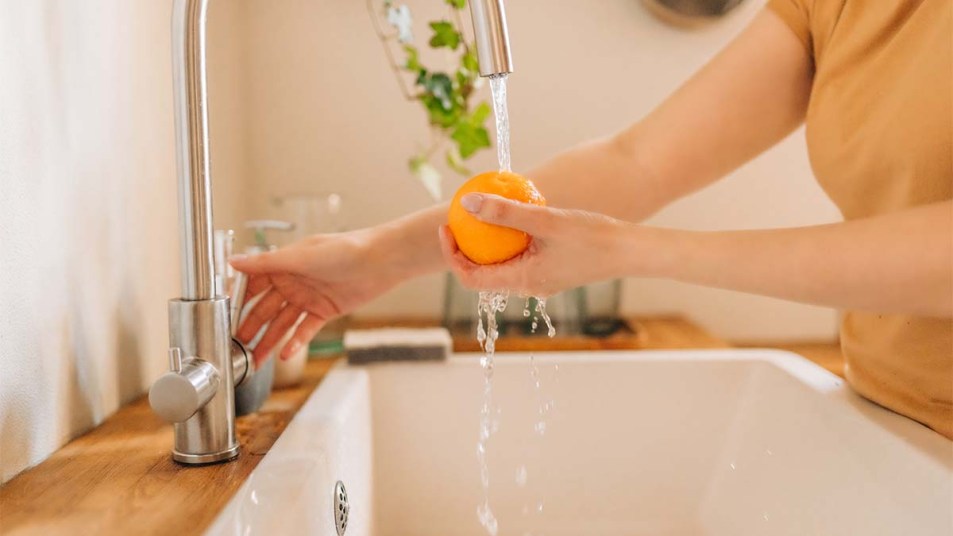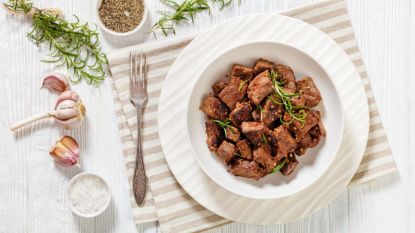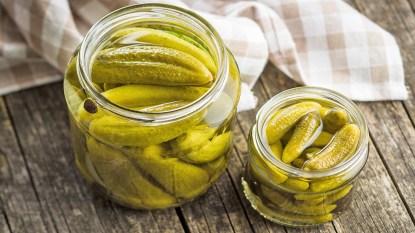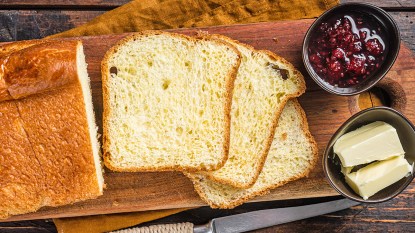How to Wash Fruit and Vegetables to Actually Remove All the Dirt and Bacteria

Washing fruit and vegetables before you eat them is one of the top food safety commandments. But have you ever thought about whether giving your freshly picked apple a quick rinse under the tap is really effective?
“Whether they’re from your home garden, a farmer’s market, or supermarket, there is always some risk of contamination,” says Dr Kim-Yen Phan-Thien, a Lecturer in Food Science at the University of Sydney. “Washing fruit and vegetables before consumption is one of the steps that a consumer can take at the household level to reduce their risk of foodborne illness.”
Likewise, Jessica Langdon, founder of Koala Eco says even organic produce needs to be cleaned thoroughly before you toss it into a salad, as it “all undergoes human handling” and can be covered in fertilizers, mold spores, animal waste, dust, and dirt.
Why You Should Always Wash Fresh Produce
If the thought of hundreds of people handling fruit and vegetables in the supermarket isn’t enough to convince you to wash your fruit and veggies, here are four more reasons that will change your mind:
- To reduce bacteria that can cause food poisoning, including E. coli, salmonella and listeria
- To remove grit and soil that can be caught in the stems or florets of veggies such as leeks and broccoli (nobody likes the crunch of sand between their teeth)
- To wash away any garden pests such as slugs, caterpillars, and worms
- To remove food-grade waxes on fresh fruit such as apples and lemons
Is rinsing with cold water enough?
Because the contamination of fruit and vegetables occurs mostly on the surface, rinsing produce under clean running water is a great first step to take. But the process involves more than just flushing an apple under the tap and hoping for the best. “Rinsing under running water may remove some contaminants, but bacteria can adhere to surfaces, so gently rubbing while you rinse greatly increases the effectiveness of washing” says Dr. Phan-Thien.
Should you soak produce n a mix of water and white vinegar?
In recent years, many DIY guides to washing fruit and vegetables in a mix of equal parts water and vinegar have appeared online. “Soaking produce in a vinegar solution can help to inactivate or kill microorganisms, as the acidity (low pH) disrupts their metabolism, but I do not consider this a necessary step to take, and it is likely to leave an undesirable aftertaste on your fruit and vegetables,” says Dr. Phan-Thien.
Should you use a fruit and vegetable wash?
An additional step you can take to ensure fresh produce is clean is to buy a specialized fruit and vegetable wash, a new product you may have seen in stores. The purpose of these washes is to help remove not only bacteria, but the waxy coating that can be found on items such as apples, lemons and eggplants. But, pay close attention to the ingredients before you invest in one of these products, says Langdon. “It’s crucial to look for a product that is composed of plant-based, non-toxic and ideally food-grade ingredients. Our Fruit and Vegetable Wash (Buy at Koalaeco.com, $15) is powered by pure mandarin essential oil and uses biodegradable, food-grade surfactants and solubilizers.”
Dr Phan-Thien says while many fruit and vegetable washes contain reasonable ingredients and are safe to use, “I don’t use them and I don’t think they are necessary!” So in the end, whether you use one or not really comes down to personal preference. Langdon believes the taste of thoroughly washed produce speaks for itself, and that once you are accustomed to eating food without the wax, you’ll find “your fruits and vegetables taste far better!”
When should you use a vegetable scrubbing brush?
“Supermarket produce like apples, peppers, cucumbers, eggplants, and citrus fruits often have wax applied to prevent moisture loss and make them look more appealing to consumers,” says Langdon. She recommends giving these items a good scrub before you consume them. Dr Phan-Thien says tougher produce, like cantaloupe and potatoes, can also be given a good scrub without causing damage. “The rough surfaces of these products can collect dirt and provide harbourage for pathogens,” she says.
What is the best way to wash leafy greens?
For salad leaves like cabbage, kale, and spinach, Langdon recommends filling a clean sink or prep bowl with cold water, adding a cap full of fruit and vegetable wash to the mix and allowing the salad leaves to soak for about five minutes before rinsing thoroughly under cold running water. Soaking the leaves first will allow any dirt or sediment to sink to the bottom of the water, while rinsing the leaves thoroughly while giving them a gentle rub will help to remove surface bacteria.
Does washing produce remove residue from chemicals such as fertilizers and pesticides?
“Chemical residues are a potential hazard, but not considered to be a major food safety concern in Australia,” says Dr. Phan-Thien. “Chemical residues in Australian foods have been closely monitored since the 1990s and are consistently low.”
This is because there are several governing bodies including the Australian Pesticides and Veterinary Medicines Authority (APVMA), Food Standards Australia New Zealand (FSANZ) and state food regulators dedicated to monitoring and maintaining consistently low rates of chemical residue on fresh produce. Lorraine Haase of FSANZ spoke to SBS in 2016 and says residue surveys have consistently found very low levels of pesticides on fruit and vegetables grown in Australia. “A lot of the time, we find absolutely no trace of residue on the fruit and veg,” Dr. Phan-Thien adds.
Does washing fresh produce remove all bacteria?
Washing fresh produce is just one step in a list of many safe-handling food practices, but eliminating all risk is, quite simply, impossible.
“Fresh fruit and vegetables are not (and cannot be) produced in sterile environments. There is always some risk — even if very low,” says Dr Phan-Thien. “We want people to be aware of risk and that it is sensible to follow ‘good practice’. But we also want people to keep things in proportion. Regular consumption of fresh fruit and vegetables has overwhelming, proven benefits for health, plus they are a sensory delight in the diet!”
This article originally appeared on our sister site, Homes to Love.













